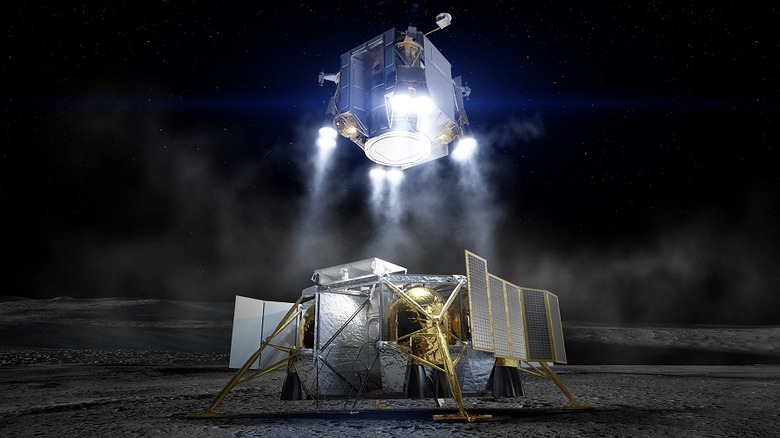NASA's Moon To Mars Program Faces Some Huge Changes
NASA's plan to return to the Moon in 2024 could be delayed, with a new proposal suggesting the US space agency reduce its emphasis on another lunar landing and instead focus on a human mission to Mars. Until now, the so-called Moon to Mars Program had scheduled putting the first woman, and the next man, on the Moon in just four years time.
Even then, that was to be a gateway to more distant crewed exploration in the future. The Moon – and a new orbiting hub known as the lunar Gateway – would be a staging point for both further landings on Earth's satellite and for missions to Mars.
A new bill, introduced in January 2020, however, would change that strategy considerably. H.R. 5666 was introduced by the chair of the House Science Committee, Oklahoma Democrat Rep. Kendra Horn, and focuses more on Mars than the Moon. "The Moon to Mars program shall have the interim goal of sending a crewed mission to the lunar surface by 2028," it sets out, "and a goal of sending a crewed mission to orbit Mars by 2033."
One of the biggest changes envisaged in the bill is to the Gateway. It would no longer need to be in orbit around the Moon, and would instead be known as the Gateway to Mars. While it would still be used as a staging point for the eventual crewed Mars mission, it would no longer be required to service lunar landings.

That sets up the second big change in the proposed bill. Rather than the current model, where NASA would source access to a Human Landing System (SLS) – aka the lunar lander – from commercial providers, H.R. 5666 instead mandates that the space agency itself would have "full ownership" of such a vehicle. NASA previously had put out the HLS program to proposals, with companies like Boeing designing their own take on the craft.
As SpaceNews points out, even the approach that lander should take to getting crew to the Moon is different from the existing strategy. The human lunar lander should be "carried on an Exploration Upper Stage-enhanced Space Launch System," the bill suggests. NASA and others had considered another strategy, whereby commercial launches would deliver lander components to the Gateway for final construction.
The goal of the bill is to make sure the US is the first to Mars with a human crew, and its backers make no attempt to hide that. "Americans should be the first to set foot on the Red Planet, and H.R. 5666 moves us closer to that goal by directing a steady and sustainable course of action," Rep. Horn said of the proposal, which has both Democrat and Republican backers.
As a result, NASA would need to provide "a list of the minimum set of human and robotic lunar surface activities that must be completed to enable a human mission to Mars, including those to be tested on the Gateway to Mars, along with a plan for completing those tasks within five years after the first human lunar landing" the bill demands. A crewed Moon base would no longer fall under the Moon to Mars remit – and thus require separate funding – and earlier plans to investigate how things like lunar ice could be mined and potentially aid in a Mars mission are also deemed outside of the core remit.
It's still early days for H.R. 5666, mind. First, the House space subcommittee needs to mark the bill up, which is scheduled to take place on January 29. Then it passes to the full committee, before heading to the House itself. Even then, there's the preexisting Senate bill concerning NASA operations from late 2019 to consider.
